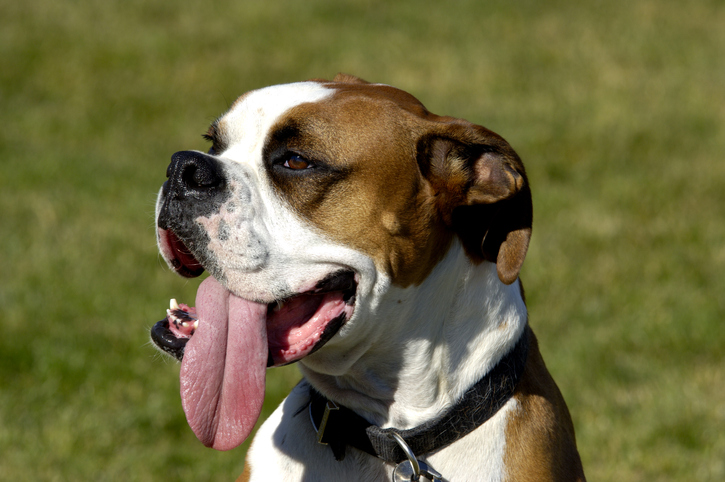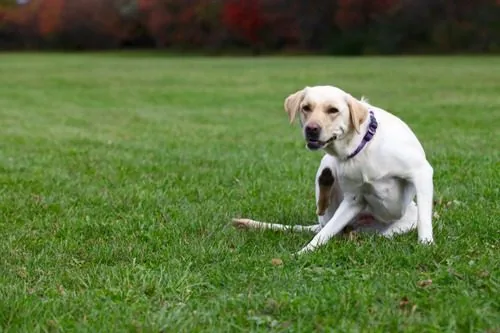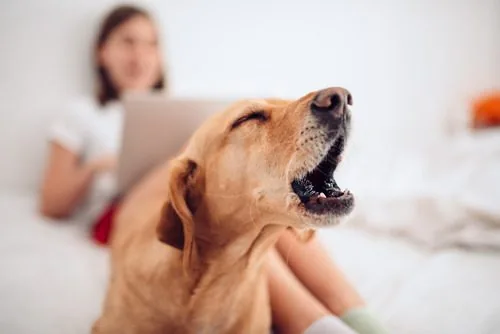Heatstroke in Dogs: Look Out for These 7 Signs
Are you looking forward to hot summer days playing with your pup? Dogs cannot tolerate hot weather the way we do and can experience heatstroke if you do not take precautions. Heatstroke is serious and can be fatal, and it is your responsibility as a pet parent to keep your canine companion safe. In this article, you will find seven signs of heatstroke in dogs.

What is a Heatstroke in Dogs?
Heatstroke in dogs occurs when the dog’s body cannot cool down. Body tissues can be affected, and it also impedes blood flow to their organs, leading to organ failure. It takes only five to ten minutes for heatstroke to be fatal for dogs, as the pup’s body temperature becomes too high for them to compensate for the heat.
What Are the Indications of Heatstroke in Canines?
Determining whether your dog is having a heatstroke can be a challenge. Heatstroke can occur from being out in the heat and humidity for an extended period. You could be playing outside with your sweet pup, and suddenly they seem not to be acting like themselves. You need to be knowledgeable of the signs to safeguard your dog from a heatstroke:
Breathing Difficulties
Dogs do not sweat like humans; they only sweat through their paw pads. When your dog pants, they circulate air throughout their bodies, which helps control their body temperature and cools them. They evaporate water in their mouth, allowing moisture to evaporate from their lungs, making them feel more comfortable in the heat.
If your dog is panting rapidly, your pup is struggling to cool themselves down, and you should get them out of the heat immediately. Brachycephalic breeds like Bulldogs and Shih Tzus are in greater danger of heatstroke. If your dog is having breathing difficulties on a hot day, it may be a sign that they are experiencing a heat stroke.
Gum Color Change
If your dog’s gums change color, it may indicate a heat stroke. Typically, a dog’s gums should be a healthy pale pink color. If gums are a different color, it could signify that your dog has poor circulation. Some of the gum color changes that can present with heat stroke:
- Blue
- Gray
- Purple
- Bright red
A paler than normal color may also indicate that your pup is suffering from heatstroke. In addition to a change in color, their gums may become dry and sticky. To find out if your pup’s gums are healthy, touch them with your fingertip. A dog’s gums are healthy when you can feel that they are moist. However, if your canine is drooling excessively, it can be an indication of heatstroke.
Higher than Normal Pulse
If your dog’s pulse is higher than normal, their body is overheated. Their heart is trying to circulate blood throughout the body, and they are not getting proper oxygen. It is easier to check your dog’s respiratory rate than heart rate. Watch how often your dog’s chest rises and falls in ten seconds. Anything under 30 breaths per minute is presumed normal. Anything more than 35 breaths per minute is not.
Dehydration
You can tell whether your dog is dehydrated by checking their skin elasticity. Gently pinch a small portion of skin on your pup, then let it go. If your canine’s skin does not return to place immediately, it could mean they are dehydrated. Your pup’s gums can also signify dehydration if they lack moisture. Keeping your dog hydrated when they are hot outside is especially important.
Some suggestions to keep your pup hydrated:
- Add some water to their food
- Get a doggie drinking fountain
- Set out a few water bowls all over the house
- Make doggie ice pops (you can even use fruit!)
Another good tip is to bring water when you and your pup go outside for physical activity. Take it with you to the dog park to hydrate them after a rousing game of frisbee, or bring it with you on walks, periodically stop in the cool shade, and offer it to them.
As a general rule, your canine needs one oz. of water for each pound of their body weight. Your pup requires an extra ten percent of water per day when the temperature goes higher than 86 degrees Fahrenheit. It is imperative that when the weather heats up, you keep water handy for your dog.
Muscle Tremors
Muscle tremors are muscle movements that appear in the form of shaking, shivering, or trembling. The tremors can go from contraction to relaxation. You can tell a dog is having tremors by touching them. It may feel like your pup is twitching and having uncontrolled movements. If your canine is not drinking enough water, they can have muscle tremors resulting from dehydration and an imbalance of electrolytes.
Fever
If your pup has an elevated temperature, they may be experiencing heatstroke. A canine’s average temperature can be between 99.5 and 102.5 degrees; anything above this is a fever. If your pup’s eyes are red and they have warm ears and a warm, dry nose, you may want to check them for a fever. Using a washcloth, you can help reduce your dog’s fever by applying cool water around his paws and ears.
Vomiting or Diarrhea
Heat can put stress on the gastrointestinal tract, triggering vomiting or diarrhea in dogs. It is one of the most common indicators of heatstroke. Sometimes there are other conditions in conjunction with it, such as bloody stool or blood in the vomit. A significant factor is dehydration, as vomiting or diarrhea can prompt your dog to lose a substantial amount of water, leading to electrolyte imbalances.
How Does a Heat Stroke Occur?
Several factors can cause or contribute to heatstroke in dogs. For example, if you have a brachycephalic breed, they are more susceptible to heatstroke. Some canines are not used to hotter weather or are more vulnerable to it. Some of the environmental factors involved in heatstroke:
- Strenuous exercise
- High heat and humidity
- Lack of access to shade
- Not adequately hydrated
Dogs with thick or long fur may also be more likely to have heatstroke. Overweight dogs and senior pups may be at risk, as well as dogs with an underlying medical condition, such as heart or lung disease. Puppies cannot stabilize their body temperature as effectively as adult dogs and may have difficulty on hot and humid days.
Heatstroke can also occur when there is poor air ventilation. Never, ever, for any reason, leave your pup in a hot automobile. The inside of the vehicle gets even hotter than the outside temperature. You should never leave them isolated in the car.
Seek Veterinary Care Immediately if Your Dog Has Heatstroke
You should be aware of the indicators of heatstroke in dogs, as they become overheated more easily than we do. Keep your pup hydrated and give them access to the shade during outside play. If you see your dog demonstrating any of the signs mentioned in this article, get them out of the heat and contact your veterinarian immediately. Our veterinarians at The Village Vets in Atlanta, GA will be there for you and your dog every step of the way.
Recent Posts
About The Village Vets
The Village Vets is a network of animal hospitals based in Atlanta, GA and the surrounding area. We offer honest, excellent service to our clients in a comfortable, friendly atmosphere. To learn more about our locations and how we can better serve you and your pet, click the button below.
Share This Post
Recent Posts
About The Village Vets
The Village Vets is a network of animal hospitals based in Atlanta, GA and the surrounding area. We offer honest, excellent service to our clients in a comfortable, friendly atmosphere. To learn more about our locations and how we can better serve you and your pet, click the button below.



